This post may contain affiliate links. If you make a purchase through a link, I may receive a small commission, at no cost to you. These commissions help keep this website up and running, and I thank you for your support. Read my full disclosure here.
We visited Exmoor as part of our two week holiday exploring Dorset, Devon, and Cornwall – read my posts to find out more. We were extremely lucky to visit during some of the hottest days of the year, with beautiful, clear blue skies every day. We arrived in Exmoor National Park in the evening after spending the day exploring the Cornish coastline. Although we were scheduled to spend two nights in Exmoor, we really only had one day to explore, as we arrived late in the evening and had to depart early on our last day to drive home.
With so much to see and do in this amazing place, we headed out early to try and see as much as possible. If you have more time, I definitely recommend staying longer. The roads around Exmoor were generally pretty good, but there were some very narrow ones when you turned off the main roads.
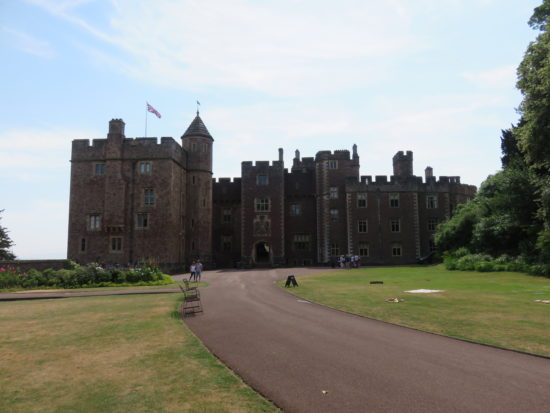
Our first stop for the day was the majestic Dunster Castle. It is owned by the National Trust, entry is free for members but there is a fee for non-members. The castle is situated in the village of Dunster which is an attraction in its own right. There is a path by the stables and bathrooms that leads out to Dunster High Street, and it is worth exploring. This area has been occupied for thousands of years as evidenced by its Iron Age Hillforts. The village you see today grew up around the castle following the Norman Conquest of 1066. The castle itself is mentioned in the Domesday Book of 1086, however, the building has changed a lot over the years due to the many families that have lived here. Some 13th century gates can be seen, but other than that, very little of the original remains.
After visiting the village, we explored the expansive gardens that encircle the castle. The Hankerchief tree was in flower and it looked beautiful, the white flowers look like hankies. Apparently the former lady of the castle, Alys Luttrell, smuggled the seeds in her handbag from South Africa. After crossing the Lovers Bridge, we came to the 18th century watermill where they still mill flour. The staff here provided some interesting anecdotes and insight into what it was like working here when the mill was at its peak. There is a small gift store in the mill selling the milled flour, so we bought ourselves some bread flour.

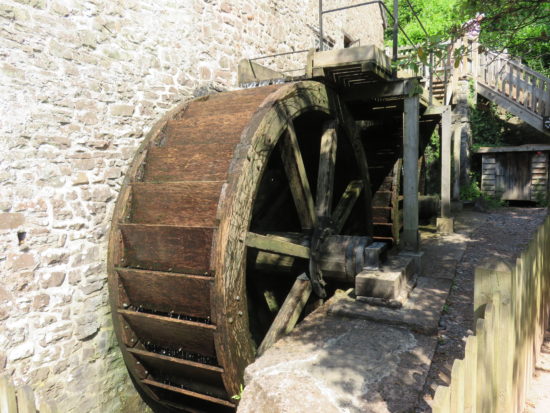
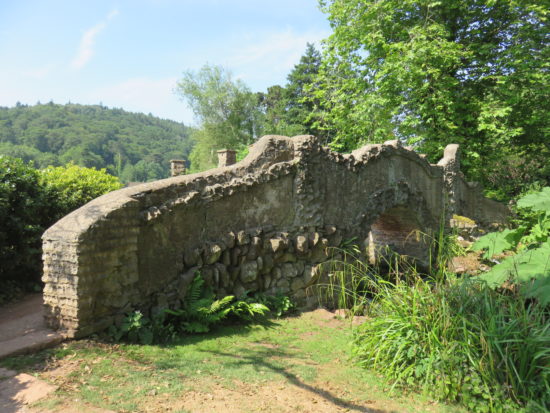
We walked up to the circular walk and visited the family pet cemetery. We also discovered the entrance to the underground reservoir, which is under the Keep Garden and is lit up with blue lights. There is a recording that tells the history of this water supply. After exploring outside, we eventually made it into the very grand house. Although originally a Saxon stronghold, it is now richly adorned as the Victorian country house it once was. I enjoyed exploring the home and learning about the history of the family.
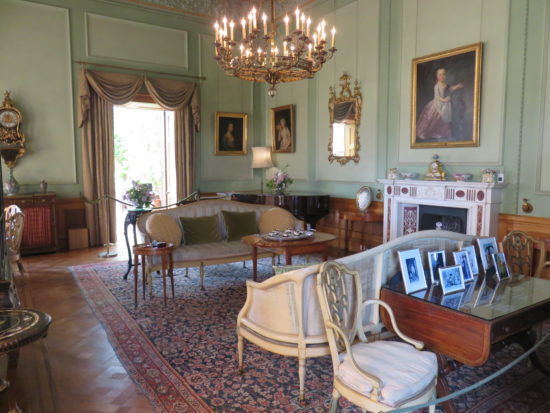
As we left, we visited the old crypt, which was rather spooky. Bats are living in the castle, and they show recordings of them on TV screens. Whilst we were there, the playback stopped working. A staff member came to fix it and, whilst doing so, took the time to turn the live camera on and showed us the bats that were currently roosting there.
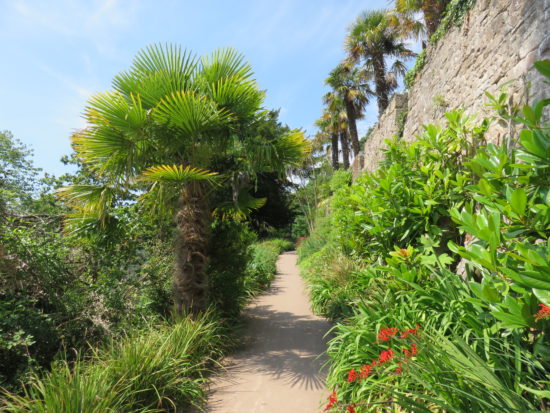
From Dunster Castle, we drove up the A39 to Selworthy, a village filled with a lovely church and cottages. There is a car park in front of the church that operates by an honesty box, but there is a National Trust just a bit further up the road from it. The car park in front of the church offers stunning views of the countryside. This village is part of the National Trust’s Holnicote Estate, which covers the northern fringes of Exmoor and includes the hamlets of Bossington, Tiverton, Lynch, Brandish Street and Allerford. If you have time, there are plenty of walking paths that take you through the countryside and villages.


We then drove back to the A39 and turned off to explore the neighbouring village of Allerford. This was a small but very attractive village with its thatched stone cottages. It felt like we were stepping back in time. We drove on a little further to Bossington, where we found a National Trust car park that doesn’t seem to appear on Google maps (free for members, fee for non-members).
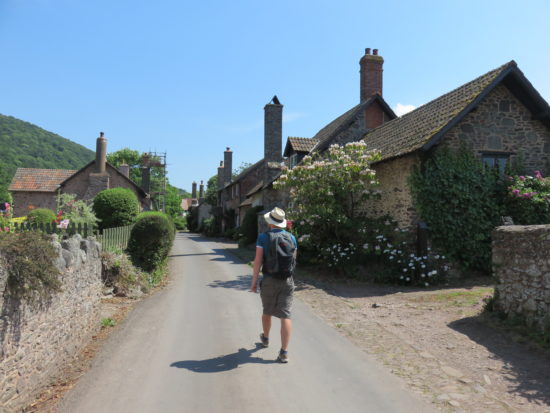
We were keen to explore this beautiful area, so we headed out for a walk down the lane to Bossington Beach. If you want a longer walk, then there is a path that leads to the nearby village of Porlock. Along the path were lovely cottages, one had some angora goats in a yard and out the front of the house was an honesty box selling handmade woolly hats. Further down was an apple orchard where they were selling bottles of Bossington Farm pure apple juice from an honesty box. We bought some and I can honestly say that it was the best apple juice we’ve ever had. I wish we’d bought more. The beach is very exposed and windy, so not really suitable for sunbathing or swimming, but it is a lovely area. We then walked back to Bossington and then on to Allerford. If you are looking for something to eat, then there is a nice cafe in Bossington called Kitnors tea room.
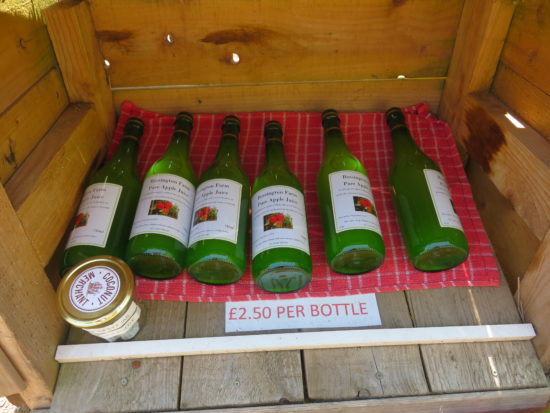
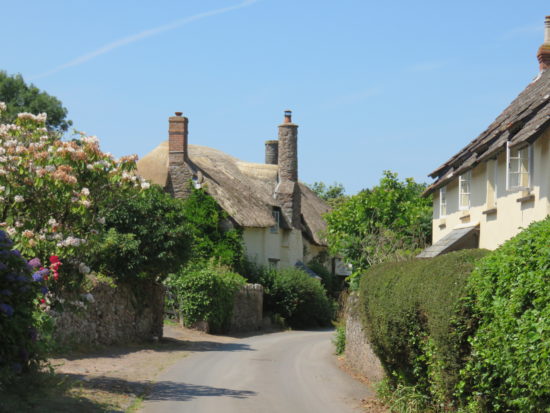
In the afternoon, we drove to Porlock, where we had to sit in a traffic jam for a while. The A39, which runs through the town, gets very backed up as the road gets crazily narrow, and tour buses are trying to get through. As we headed out of town, there is the very steep Porlock hill, which was a bit of a challenge for our little car, especially as we got stuck behind some slow traffic. But eventually we made it to the top, where there is a large car park that enables you to stop and enjoy the beautiful view of the ocean and moor behind you.

We continued along the A39 that runs near the coast and also stopped to enjoy the views and countryside at County Gate Car Park. The views across the valley were so peaceful. There are a number of walking paths that lead from this car park, which I wish we had had more time to explore.
Eventually, we turned up the B3223, which took us over the moor. I had seen a map of the park with likely Exmoor pony viewing spots, and this had been one of the places marked on the map. Of course, wildlife is rather unpredictable, so we were worried we wouldn’t get to see them. However, we were in luck and we came across a herd of ponies grazing near the roadside. Thankfully, there are lots of pull-over bays along the side of the road.
I was so excited to finally get the chance to see these amazing ponies in person, as they are classed as “endangered”. Although they graze freely on the moor, they all have owners. The history of these ponies dates back centuries. Fossil remains of horses have been found in the area of Exmoor dating all the way back to about 50,000 BC. There is even Roman carvings showing ponies similar to the Exmoor, and a reference to them in The Domesday Book records in 1086. Sadly, they nearly became extinct as soldiers in the Second World War used them for target practice, and they were also killed for meat. However, in the 1950s a small group of breeders worked to save this wonderful pony by exporting them to North America. In 2010, there were an estimated 800 Exmoor ponies worldwide.
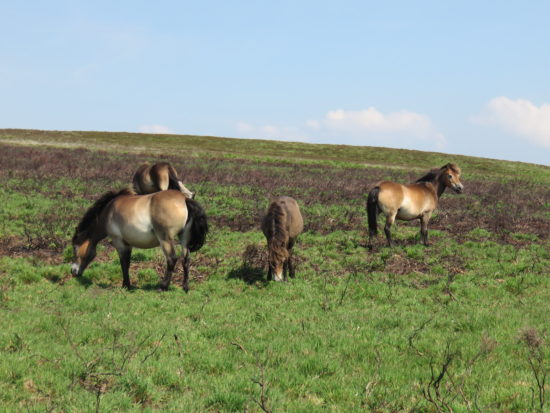

Their look and colouration resemble wild horses. They are usually a variant of dark bay with pangaré “mealy” markings around their eyes, muzzle, flanks, and underbelly. Pangaré markings are considered to be a primitive trait. They are a small but sturdy pony, usually standing 11.1 to 12.3 hands (45 to 51 inches, 114 to 130 cm). The Exmoor pony is known for being strong and hardy with excellent endurance. My favourite feature of the Exmoor ponies is their wonderful eyes. They have a unique feature called a “toad eye”, which is basically an extra bit of fleshiness around the eyelids which helps to deflect water and provide extra insulation.
We spent some time watching them graze before driving on through the beautiful countryside and down some rather narrow roads to get back to Exford, where we stopped at a local pub, the Exmoor White Horse Inn. Here we got a chance to enjoy the local cider. Somerset has lots of apple orchards and is famous for its cider. I never used to like cider much, as it always used to be that terrible stuff that came in plastic bottles. However, a good cider is irresistibly good. It was a lovely, hot afternoon, so perfect for sitting in the pub’s garden and enjoying a drink.
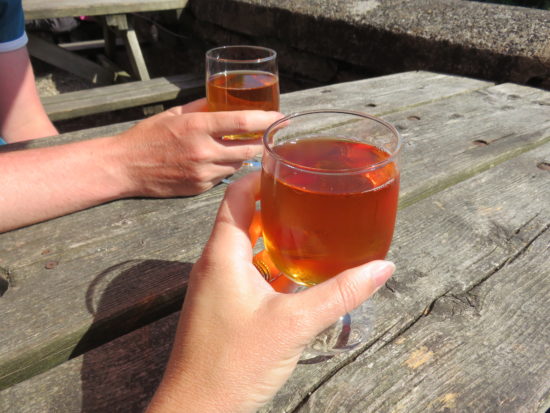
However, our day had not stopped here. In the evening, we had booked badger watching at Devon Badger Watch in Tiverton, which is actually in Devon, not Somerset. It was about a 40 minute drive away from where we were staying, but the roads there (except for the last part) were good and it was a wonderful evening for a scenic drive to Tiverton.
We have only seen badgers dead on the side of the road, so we were very much looking forward to finally seeing them alive and happy in their native environment. When we arrived, our host met us and walked us down to the badger hide. Sadly, we were not able to take any photos for fear of frightening the badgers. However, they do hold photography nights, so if you are a keen photographer, book onto one of these sessions. We had also been asked to wear dark colours, quiet clothing (no rustling jackets) and no perfume as the badgers are very shy and are easily scared off. They are quite blind but are sensitive to movement, sound and smell. Our guide also asked us not to speak and to try not to move whilst we were in the hide. It’s important to add that the badgers are not predictable, and so sometimes for whatever reason, they choose not to come out for very long in front of the visitors. To increase your chances of seeing them, it’s important to follow the guide’s instructions.
When we got to the hide, the youngsters were already out playing. They heard us coming and froze, as did we, then they ran into their tunnel as we got in to the hide. The owner explained to us that after they had built the hide, the badgers built tunnels under it. Our guide then spread some nuts out for badgers to snack on and then quietly gave us an interesting commentary on badgers. The family we watched were adorable. Three cubs were now nearly as big as their parents. The youngsters were very rambunctious, and I loved the loud, snorting sounds they made whilst eating. This was truly a magical experience, and a wonderful end to our holiday. I recommend that you take the opportunity to see these wonderful creatures in the wild.
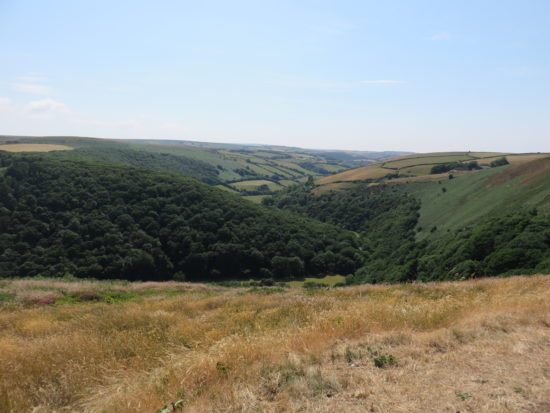
Practical Tips for Visiting Exmoor
- Money Saving Tip: Lots of sites, attractions and parking in Exmoor are owned by the National Trust. To save money, consider purchasing a National Trust membership.
- Ponies: It is illegal to feed the ponies on the moor, so please don’t! Drive slowly and carefully as there is no fencing through Exmoor so the animals roam free.
- Badgers: If you are going badger watching, wear dark coloured clothing that is quiet (no rustling) and no perfumes. Try to sit as quietly and as still as possible as they are very shy creatures.
- Language: English
- Currency: British pound
- Tipping: Not required, but people usually round up.
- Electricity: The electrical current is 230 volts AC. Wall outlets take a three pronged plug only used in the United Kingdom and Ireland. However, you are better off purchasing a worldwide adaptor that can be used in the United Kingdom as well other countries. At least then you can potentially get some further use out of it on future vacations. If you’re taking a number of electronics with you, then I would recommend purchasing a couple of these adaptors.
- Driving: In the UK, they drive on the left hand side of the road with speed signs in miles per hour (mph).
- Fuel: Fuel is expensive in the UK, so save money by downloading a UK fuel app so you can search for the nearest petrol station with the cheapest fuel.
- Navigating: We used Google’s free Offline Maps. Google Offline Maps allows you to access free maps for navigating that can be used offline i.e. you don’t need WIFI, data, or roaming to be able to use them. Follow my detailed guide on how to use Google’s Offline Maps.
- Using your phone as a GPS will drain your battery quickly, so use a portable battery charger which you can use to charge your phone and any other USB chargeable devices.
- If you prefer a paper map, then purchase a road map before you go. At least it’s reliable and won’t run out of battery or malfunction like the electronic options!



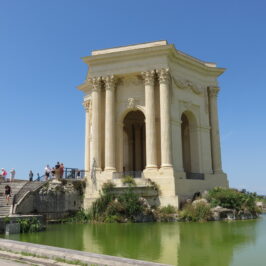
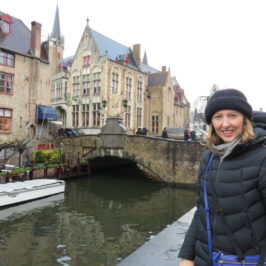
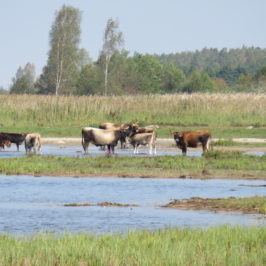
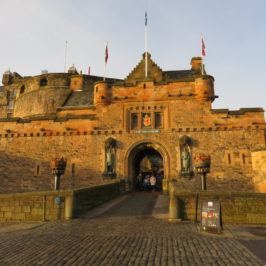
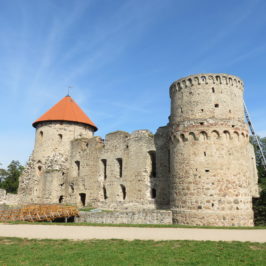
Leave a Reply